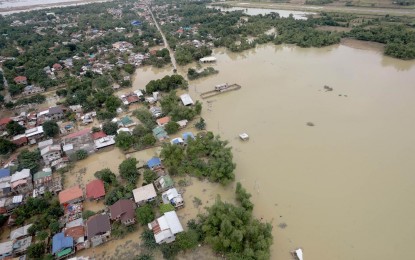
(PNA file photo)
MANILA – Flooding in the aftermath of Typhoon Ulysses (international name Vamco) may finally cease this week in areas along and near Cagayan River's downstream portion and its tributaries.
Water in the area continues to recede and may already dip to the alert level of 4.00 meters by Tuesday afternoon, noted Cagayan River Basin Flood Forecasting and Warning Center (CRBFFWC) chief Leo Buñag.
"That means no more flooding except perhaps in cornfields there," he said.
"Ulysses" left Region II submerged this month as water in Cagayan River rose significantly and overflowed due to its rains and runoff from Sierra Madre and Cordillera mountain ranges, as well as excess water that Magat Dam released.
Water level in the waterway's downstream portion called Lower Cagayan River (LCR) even rose to 13.30 meters on the night of Nov. 13 -- surpassing the 11-meter critical level in the area, Buñag noted.
He said the water level also exceeded the 2010 record elevation of 12.70 meters.
"The last known time we had similar flooding in Cagayan was in 1973," he said.
Cagayan River discharges into Babuyan Channel which borders Aparri municipality in Region II's Cagayan province.
Buñag said Cagayan River's water level has been above alert level since late October this year due to rain from various weather systems including tropical cyclones like "Ulysses".
He said flooding no longer hounds Cagayan River's upper and middle portions as "water in those portions continue receding".
CRBFFWC, however, cautioned about persisting flooding in downstream Tuguegarao City and the towns of Peñablanca, Enrile, Solana, Iguig, Amulung, Alcala, Baggao, Lasam, Gattaran, Lallo, Camalaniugan and Aparri, as well as in communities along and near LCR tributaries Pinacanauan de Tuguegarao, Chico, Pared, and Dummun.
These LCR areas are still submerged in floodwater that is slowly receding, Buñag said.
He said the volume of water that flowed into LCR is more than what the waterway can easily discharge so the recession is slow.
Waves in rough waters off Aparri earlier also made it difficult for LCR to discharge water into Babuyan Channel, he added. (PNA)
